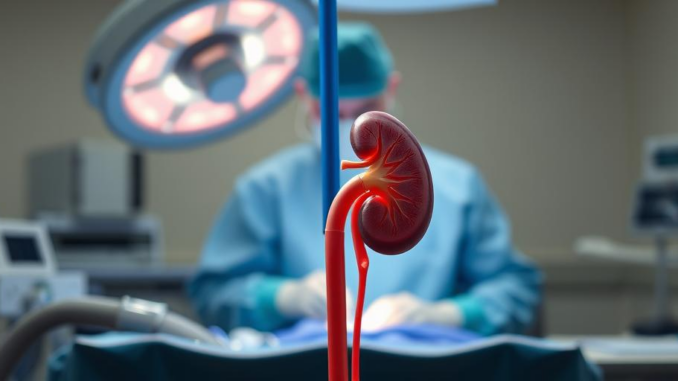
Summary
This article explores the rise of kidney stones in children, emphasizing the importance of individualized care. We delve into advanced diagnostic tools, such as genetic testing and metabolic evaluations, which allow medical professionals to tailor treatment plans effectively. Additionally, we discuss the latest minimally invasive surgical techniques, highlighting their benefits in minimizing complications and improving patient outcomes.
TrueNAS: the healthcare storage solution thats secure, scalable, and surprisingly affordable.
** Main Story**
Okay, let’s talk pediatric kidney stones – it’s becoming a bigger issue, right? I mean, it used to be something you’d mainly see in adults, but these days, more and more kids are getting them. It’s a real wake-up call, and it means we’ve got to shift gears and really focus on personalized care. We can’t just use a one-size-fits-all approach anymore; advances in pediatric urology are changing the game.
Why the Increase in Kids Getting Kidney Stones?
There are a bunch of reasons, actually. Diet’s a big one, of course. Think about all the high-sodium foods and sugary drinks kids consume. That stuff can wreak havoc. Also, genetics definitely play a role. Some kids are just predisposed, you know? And then there are underlying medical conditions. The key takeaway is that it’s complicated and different for every kid, which circles back to needing individualized care.
Smarter Diagnostics: Getting Specific
We’ve got some pretty impressive tools at our disposal now to help us personalize treatment plans. It’s not just guesswork anymore.
- Metabolic Evaluations: These are super helpful, we test urine and blood, looking for those imbalances that contribute to stone formation. And from there, we can make tailored dietary recommendations and prescribe medications that fit the child’s specific needs.
- Genetic Testing: So, genetic testing can pinpoint inherited disorders that up a child’s risk. It’s like having a roadmap. With this info, we can put preventative measures in place and choose the best treatment strategies. For instance, I remember one family where several members had a history of kidney stones. Genetic testing on their child revealed a specific gene mutation, allowing us to start proactive dietary changes and monitoring early on.
- Advanced Imaging: We’re talking ultrasound, CT scans, and MRIs. You get a super detailed look at the urinary tract. It’s vital for accurate diagnosis and planning surgery, if necessary. You just don’t get that level of detail with older imaging techniques, its invaluable.
Minimally Invasive Surgery: A Gentle Touch
Look, nobody wants their kid to have surgery, I get it. But if it’s unavoidable, minimally invasive techniques are the way to go, especially for children.
- Shock Wave Lithotripsy (SWL): This is pretty cool, actually. It uses sound waves to break up the stones into tiny pieces, so they can pass on their own. No incisions! Less pain, faster recovery. Who wouldn’t want that?
- Ureteroscopy: Think of a tiny, flexible camera that goes up into the ureter. Surgeons can then locate and remove or fragment the stones, its really effective and leaves minimal scarring. I mean, technology is amazing, isn’t it?
- Percutaneous Nephrolithotomy (PCNL): Okay, this is for the bigger stones. They make a tiny incision in the back to access the kidney and remove the stone or break it up. It’s still minimally invasive, but it’s for more complex cases. But its still a much better option than traditional open surgery. Lets be honest, no one wants that.
Looking Ahead: The Future of Pediatric Kidney Stone Treatment
We’re not standing still, you know? Research and technology keep pushing us forward.
- Robotics and 3D Modeling: This is the next level. Robotic-assisted surgery and 3D modeling give surgeons insane precision and control. That means even smaller incisions and better outcomes. It’s wild to think about.
- Individualized Prevention Strategies: This is where I think we’ll see the biggest changes. Researchers are working on prevention strategies based on each child’s unique risk factors. It’s about creating a personalized plan with diet, medication, and lifestyle tweaks to prevent stones from forming in the first place. It’s personalized medicine at its finest, wouldn’t you agree?
So, yeah, pediatric kidney stone care is evolving rapidly. It’s all about understanding the individual child and tailoring the treatment to their specific needs. As of today, March 30, 2025, this is where we stand. I’m really optimistic about the future and what we can do to help these young patients live healthier lives, especially with the new research being developed to stop it before it happens. But always remember that things in medicine can change rapidly, so stay updated!


Be the first to comment